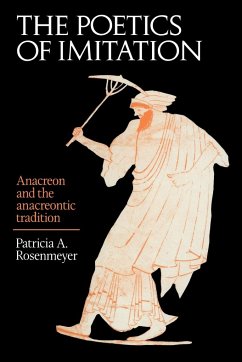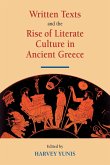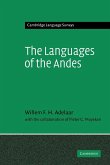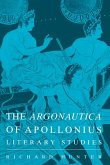Explores the complex poetics of imitation which inspired anacreontic composition for so many centuries in antiquity.
Western literature knows the anacreontic poems best in the translations or adaptations of such poets as Ronsard, Herrick and Goethe. This collection of poems, once assumed to be the work of Anacreon himself, was considered unworthy of serious attention after the poems were proved to be late Hellenistic and early Roman imitations by anonymous writers. This full-length treatment of the anacreontic corpus explores the complex poetics of imitation which inspired anacreontic composition for so many centuries in antiquity. The author reassesses Anacreon's own oeuvre, and then discusses the system of selective imitation practised by the anacreontic poets. The book explores what light the corpus can shed on ancient literary genres, intertextual influences, and the literary manifestations of symposiastic and erotic ideals in a post-classical society which looks back to an archaic model as its guiding force. The book concludes with a brief look at Byzantine adaptations and the anacreontic renaissance in Europe. A full translation of the anacreontic collection is included as an appendix and all Greek and Latin is translated to make the work available to those whose primary interest is European literature and the classical tradition.
Review quote:
"Rosenmeyer's comprehensive and illuminating discussion helps to show why and how these diverse poems had such a long-lasting appeal and were widely imitated in other European languages."
Choice
"...a fascinating account of the first edition of the Anareontea by Stephanus in 1554 and its reception....I have learned much from this book and I commend it highly."
Douglas E. Gerber, Classical World
"An excellent presentation of an interesting but neglected subject, this work should prove invaluable to students of the classics and Western European literature." Anton#237;a Tripolitis, Religious Studies Review
Table of contents:
List of plates; Acknowledgements; Introduction: the anacreontic question; 1. Origins: the role of Anacreon as model; 2. Anacreontic imitators: the model revised; 3. Reading the texts: a sterile abundance of words; 4. The anacreontic anthology; 5. The allusive text; Conclusions: Byzantium and beyond; Appendices: A. Repetition in the anacreontics; B. Register of key anacreontic words; C. A translation of the anacreontic poems; Bibliography; Index of passages cited; Index.
Western literature knows the anacreontic poems best in the translations or adaptations of such poets as Ronsard, Herrick and Goethe. This collection of poems, once assumed to be the work of Anacreon himself, was considered unworthy of serious attention after the poems were proved to be late Hellenistic and early Roman imitations by anonymous writers. This full-length treatment of the anacreontic corpus explores the complex poetics of imitation which inspired anacreontic composition for so many centuries in antiquity. The author reassesses Anacreon's own oeuvre, and then discusses the system of selective imitation practised by the anacreontic poets. The book explores what light the corpus can shed on ancient literary genres, intertextual influences, and the literary manifestations of symposiastic and erotic ideals in a post-classical society which looks back to an archaic model as its guiding force. The book concludes with a brief look at Byzantine adaptations and the anacreontic renaissance in Europe. A full translation of the anacreontic collection is included as an appendix and all Greek and Latin is translated to make the work available to those whose primary interest is European literature and the classical tradition.
Review quote:
"Rosenmeyer's comprehensive and illuminating discussion helps to show why and how these diverse poems had such a long-lasting appeal and were widely imitated in other European languages."
Choice
"...a fascinating account of the first edition of the Anareontea by Stephanus in 1554 and its reception....I have learned much from this book and I commend it highly."
Douglas E. Gerber, Classical World
"An excellent presentation of an interesting but neglected subject, this work should prove invaluable to students of the classics and Western European literature." Anton#237;a Tripolitis, Religious Studies Review
Table of contents:
List of plates; Acknowledgements; Introduction: the anacreontic question; 1. Origins: the role of Anacreon as model; 2. Anacreontic imitators: the model revised; 3. Reading the texts: a sterile abundance of words; 4. The anacreontic anthology; 5. The allusive text; Conclusions: Byzantium and beyond; Appendices: A. Repetition in the anacreontics; B. Register of key anacreontic words; C. A translation of the anacreontic poems; Bibliography; Index of passages cited; Index.








